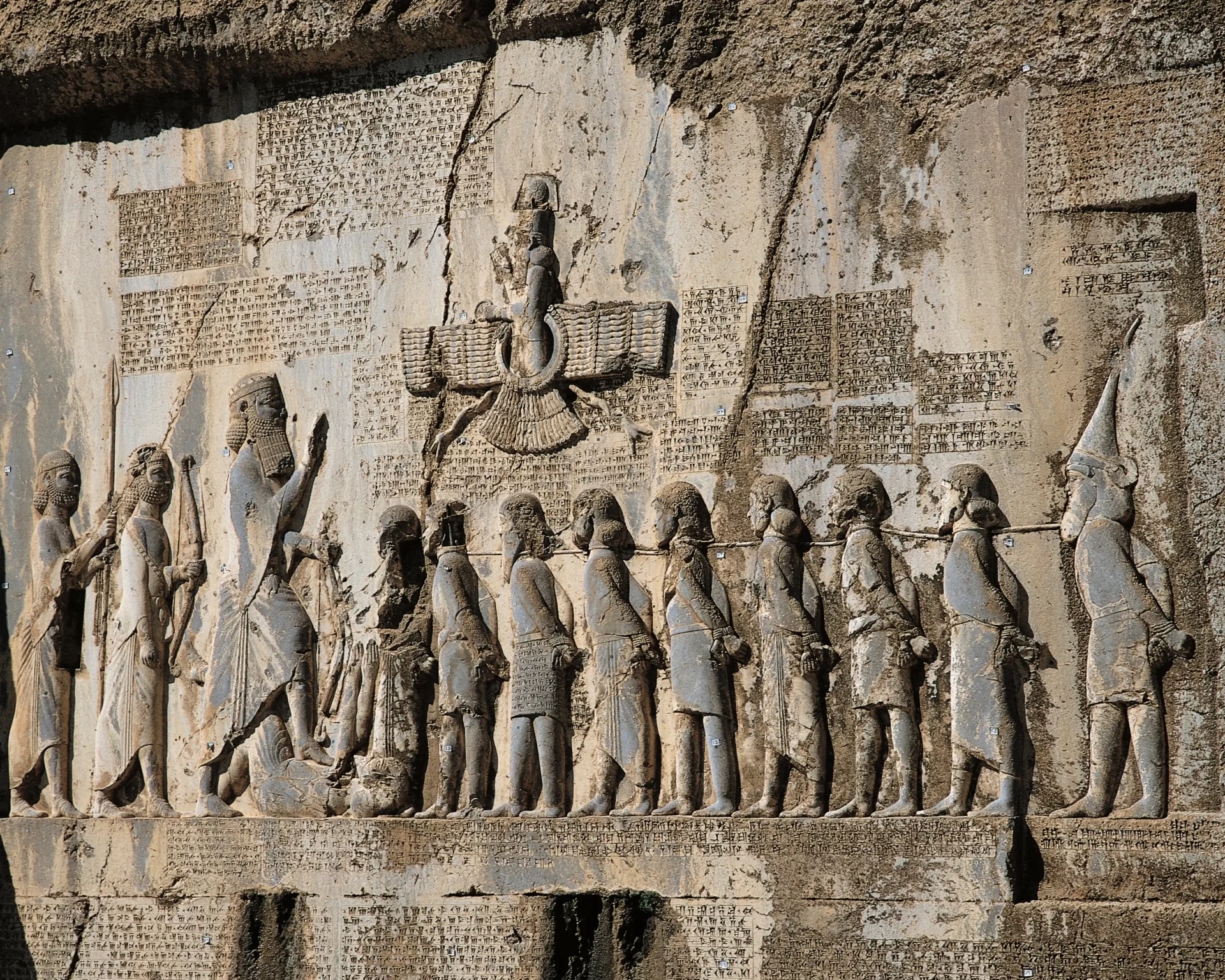
We arrived in Bistoon City, Kermanshah, at 7 PM. Facing the stone-carved inscription of Farhad, there stands the 400-year-old Shah Abbas Caravanserai, now repurposed as a hotel. Imagine entering its courtyard, surrounded by rooms with old wooden doors and the magnificent stone-carved Farhad inscription illuminated like a giant diamond protruding from the heart of a mountain.
Rooms with high vaulted ceilings and gypsum walls adorned with Iranian furnishings relieved our fatigue. After a warm shower, I came to the terrace in front of the room to see the Farhad inscription again. However, an even more amazing moment awaited us.
They spread an Iranian rug with traditional cushions for us on the terrace, offering us a hookah and Iranian tea. Lying on an Iranian rug in a 400-year-old caravanserai, I was captivated by the sight of stone inscriptions on the mountain, while suddenly the music of Mohammad Reza Shajarian started playing, blending with the soothing sound of the fountain in the middle.
Describing that moment is challenging, let alone imagining it. One of the most beautiful nights of my life etched into my memories, and an inner voice whispered: “This is your farewell; it must be glorious.
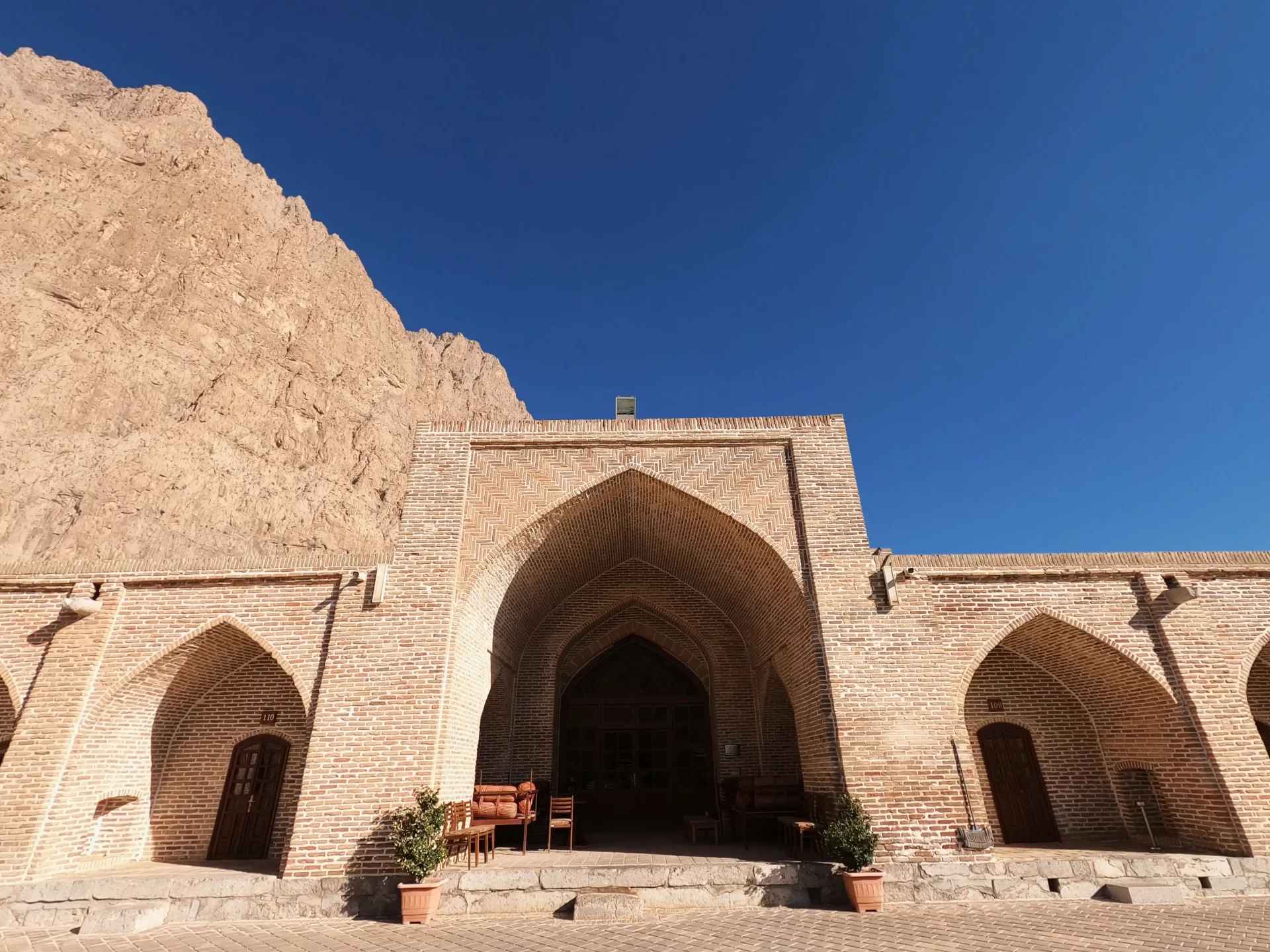
That night, I didn’t sleep by my choice; sleep kidnapped me, and when I opened my eyes, I ran towards the room in search of last night’s dream. Opening the wooden door, I saw that my dream was real, and all those unbelievable images existed.
Walking from the Abbasid Caravanserai towards the world’s largest rock inscription (Bistoon Inscription) is like stepping into history. Its greatness is unpredictable from a distance. I stood at the foot of the mountain with the prominent inscription carved into it.
It’s unreachable. The first feeling in my heart affirmed that carving this history with greatness on the unreachable height of the mountain was ordered by Darius the Great not for his people, but for the future.
Now I, one of those futures, stood at a humble point after centuries, and I still have to lift my head to the high sky to witness the scene of his triumph celebration.
This inscription describes the victory of Darius the Great and the suppression of rebels. One of the rebels lies defeated under Darius’s feet, and another figure with a chain around his neck stands against him, with the symbol of Ahura Mazda above Darius’s head, facing the rebellion.
As a tourist, one should stand below the mountain to watch it, but I was one of the few who touched it closely, running my hand over its old but robust carvings. This special opportunity marked the farewell celebration of my journey with Iran.
Farhad Tarash, carved like a grand and empty frame on the chest of Bistoon Mountain, belongs to the Sassanian era. Many assumptions and legends surround this empty frame, and everyone has their own interpretation of its carvings and story. The most beautiful legend is his chiseling a mountain for his love Shirin, depicted in the book “Khosrow and Shirin” by Nezami.
However, more realistic assumptions indicate the construction of a palace inside the mountain, left unfinished with the death of a half-ruler, or the quarrying of stone for another carving during the Achaemenid era.
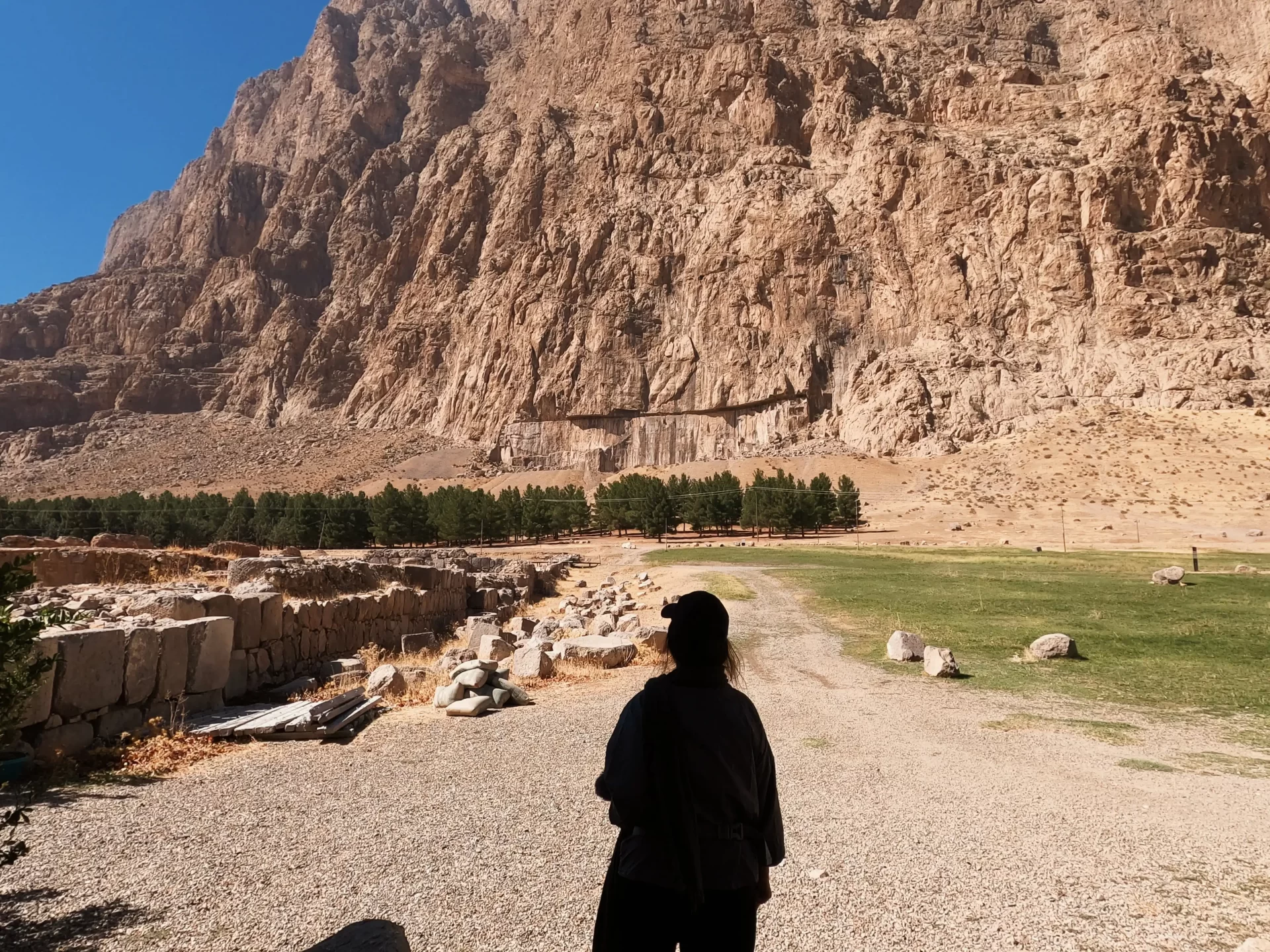
A colossal statue simultaneously created with the conquest of the Medes by the Parthians depicts a man lying on a lion, holding a cup, with an ancient Greek inscription behind his back. The head of this statue has been stolen twice and recovered each time. The real version is kept in a museum, and a copy is placed on the statue.
The unique collection of rock reliefs and inscriptions of Taq-e Bostan, dating back to the Sassanian era, is evidence of their use of all their art to describe and record their glory and greatness for all of history. Its special geographical location, right on the Silk Road, features two arches resembling caves full of treasures within a mountain’s heart.
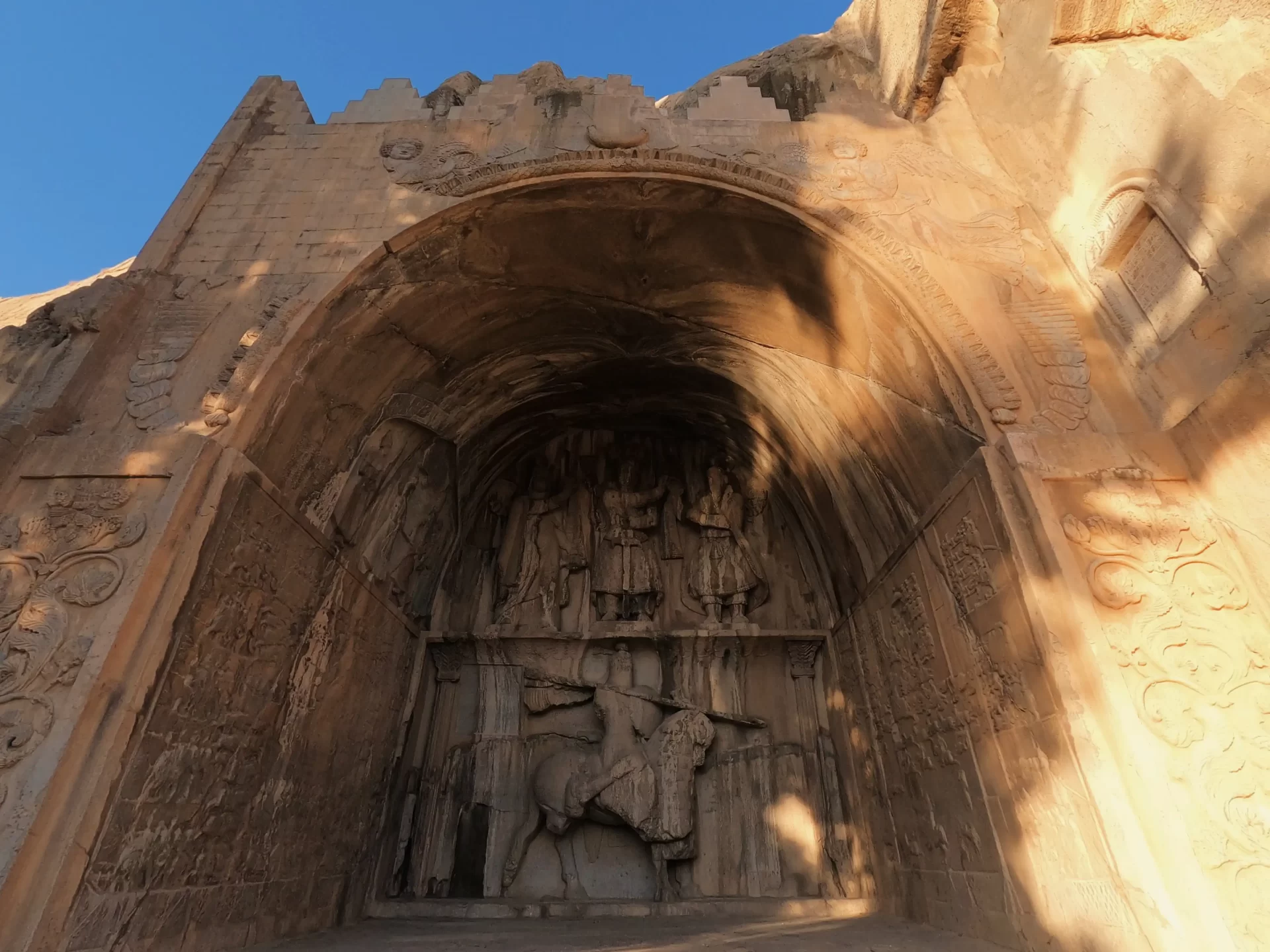
In these arches, important events such as the coronation of Khosrow Parviz, Ardeshir II, Shapur II and III are elegantly carved into the mountain. The relief of hunting deer and gazelles by riders fascinated me for hours. The details and finesse of the carvings are incredible. This relief is considered the world’s first stone painting adhering to painting principles. Khosrow Parviz, riding a shabdiz, seems to come to life from the carved painting.
When looking at the reliefs of playing music with stringed instruments, it’s as if the sound echoes within the mountain continuously. Women who knew music in the distant past, and their delicate hands playing string and wind instruments. A scene that today seems like an unattainable dream.
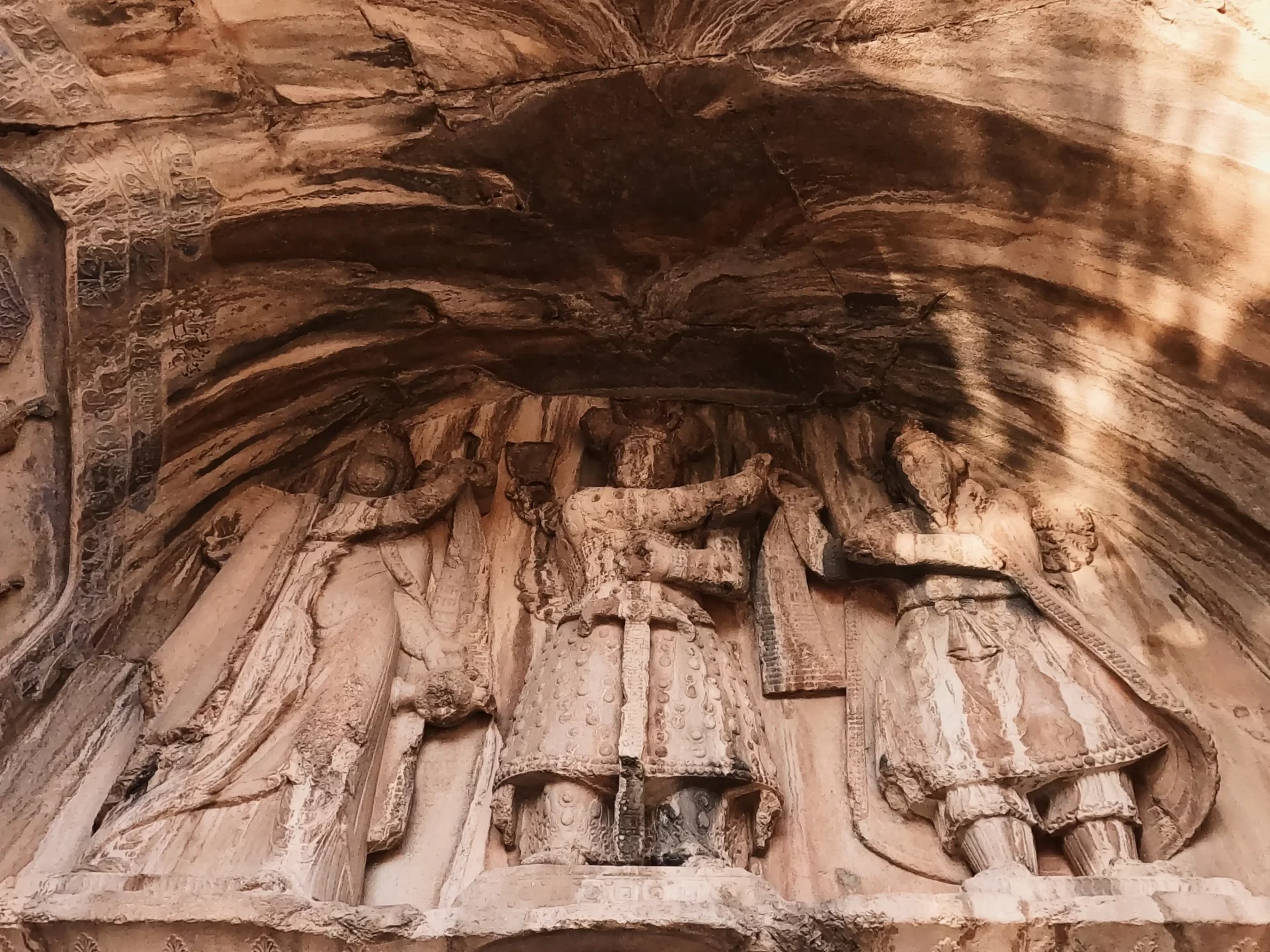
The beauty of these two arches is so enchanting that they were not demolished in subsequent eras, but during the Qajar period, the prominent role of one of the self-centered kings added extensive damage to this collection.
Exhausted, we returned to the historic Shah Abbas Bistoon Hotel and embraced its night and stars, losing consciousness from fatigue. In the morning, we visited the magnificent mansion of Tekiye Moaven Al Molk.
This building is a relic of the Qajar era and was closed and set on fire during the Constitutional Revolution, but after restoration, it became a venue for Islamic mourning ceremonies.
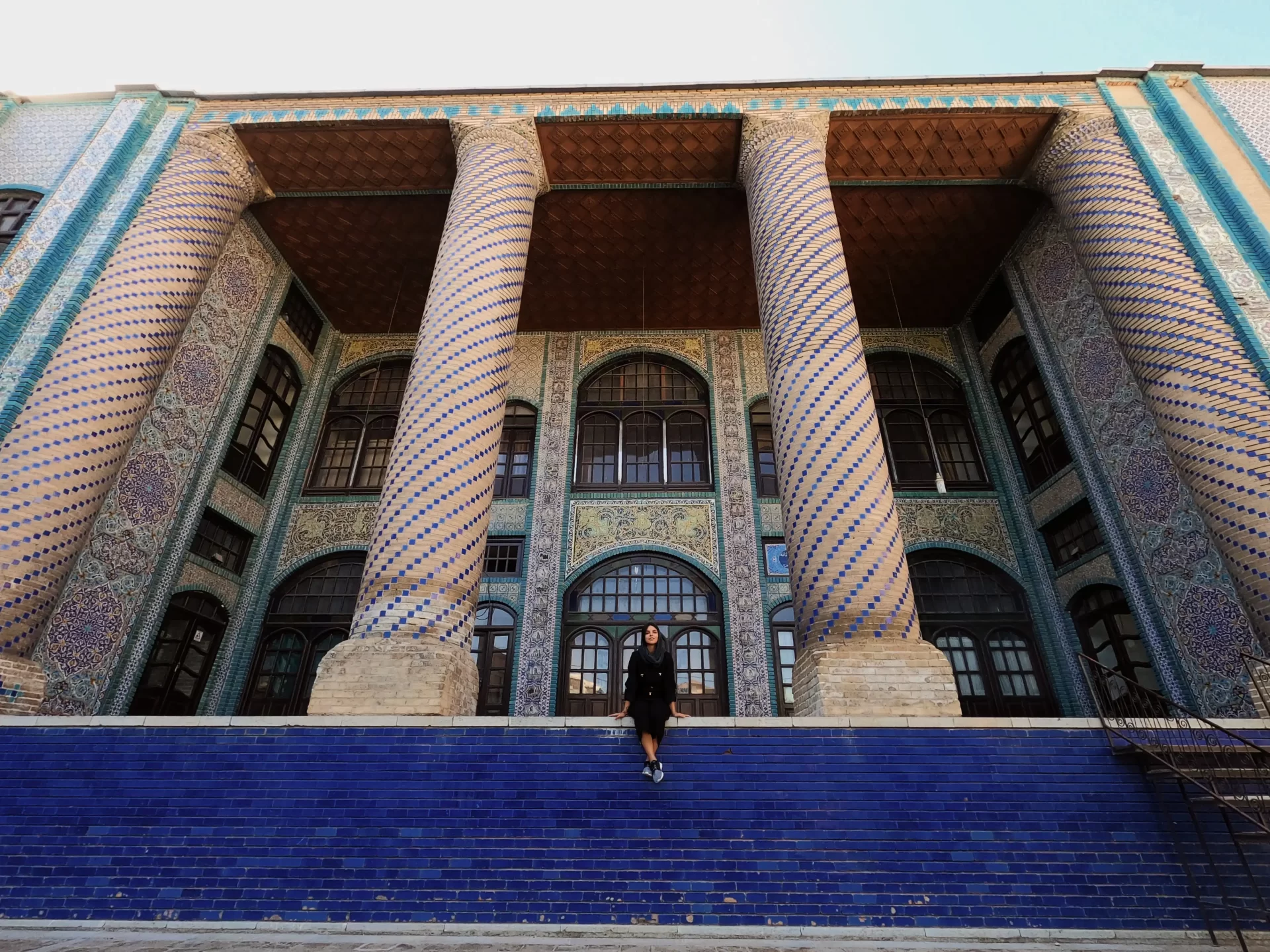
This building owes its fame to its unique tilework. The engravings on the tiles have all-natural colors, making it an unparalleled artistic masterpiece.
This structure, remaining from the Qajar era, boasts splendid mirrorwork rarely seen elsewhere. It was once used for religious ceremonies, but today this magnificent building serves as the Middle East’s Stone Parin Museum, preserving artifacts and remnants from the Parthian era.
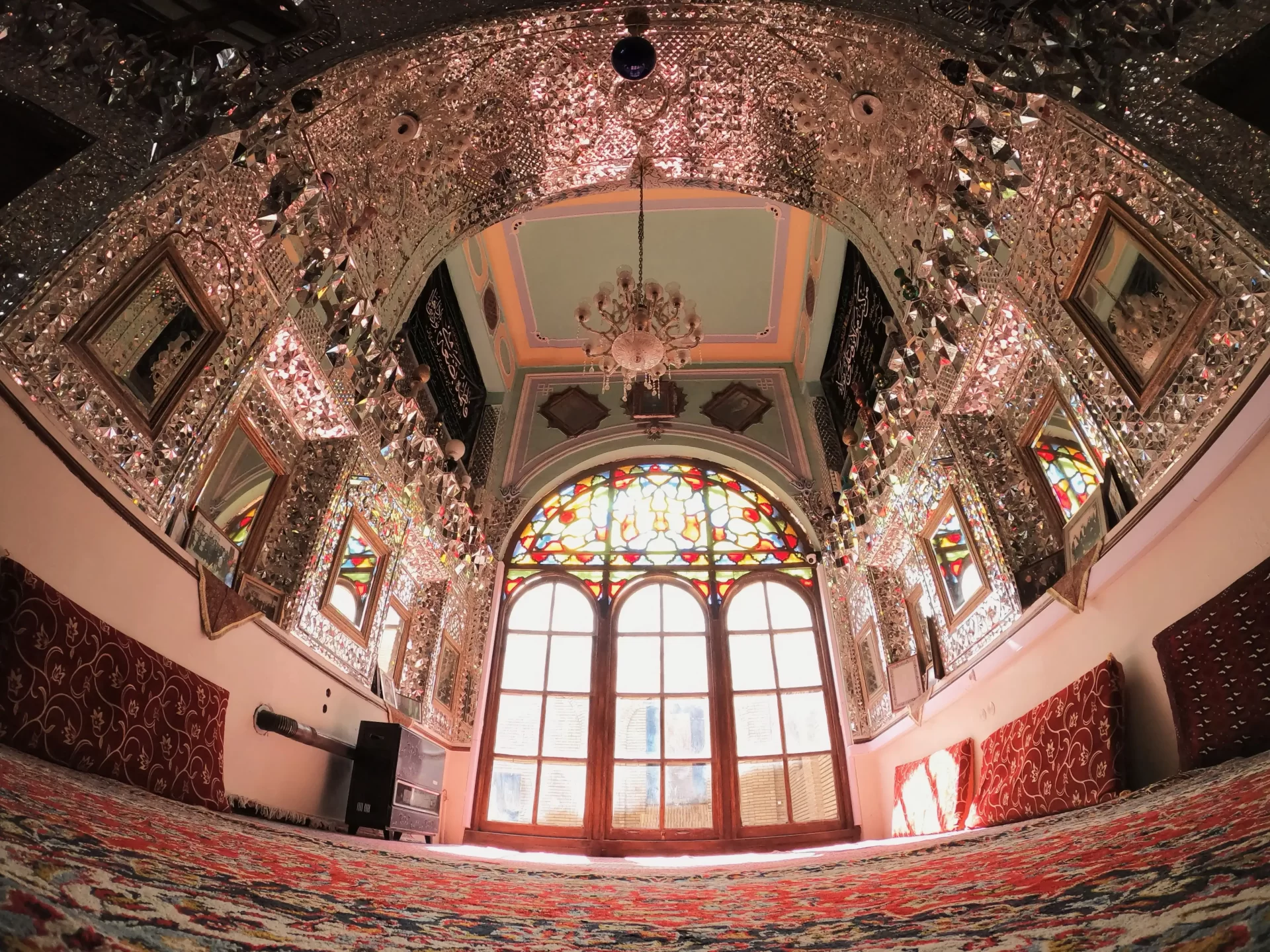
Kermanshah serves as the capital of Kermanshah Province, situated 525 kilometers west of Tehran, Iran. The 2016 census reported a population of 946,651, while the 2006 National Census indicated 784,602 residents in 202,588 households.
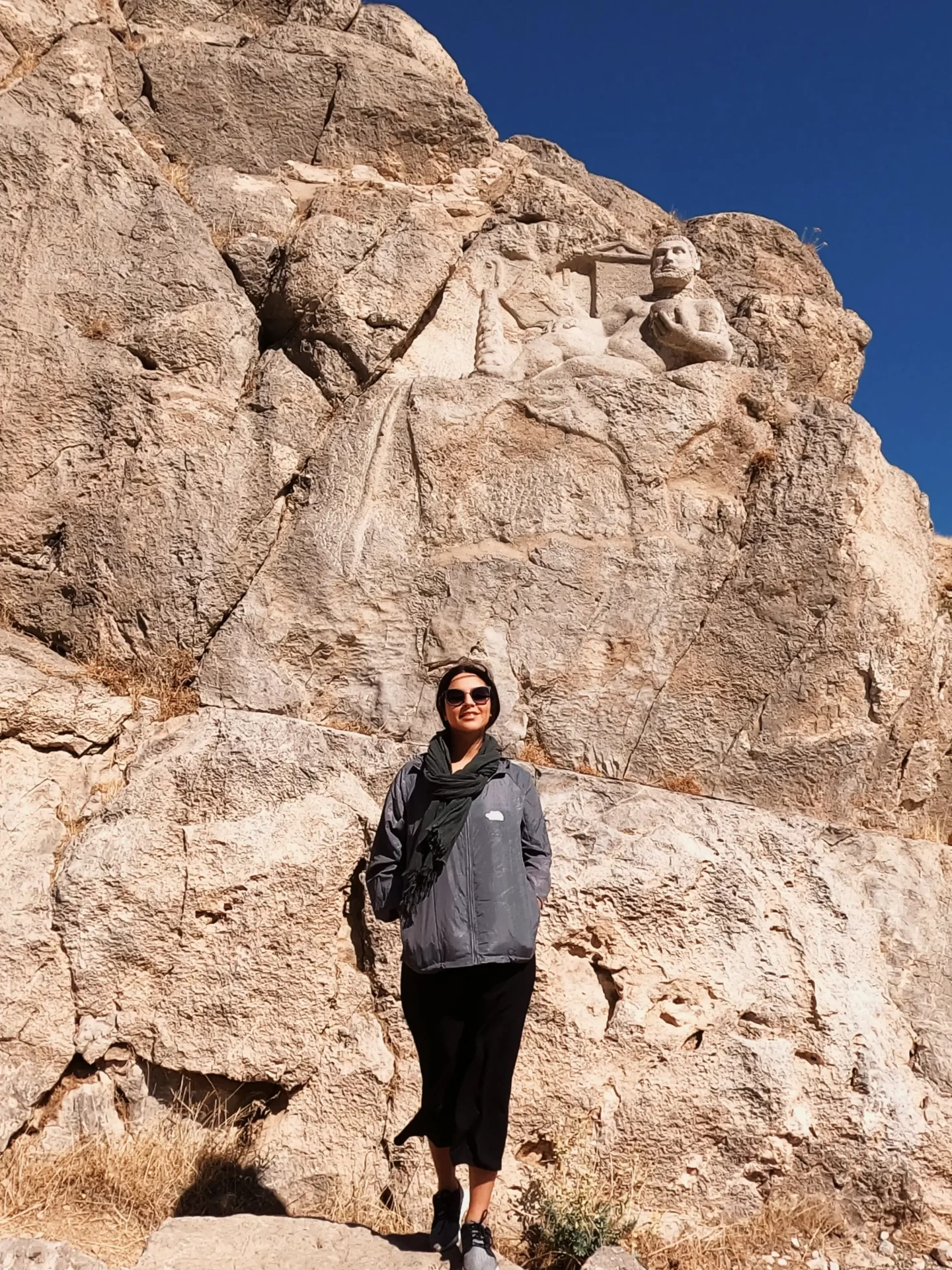
Where Imagination Knows No Bounds, and Every Stroke Tells a Tale.
1
Chaoyang D, BaliZhuang,
Beijing, China
+86 136 8334 4984